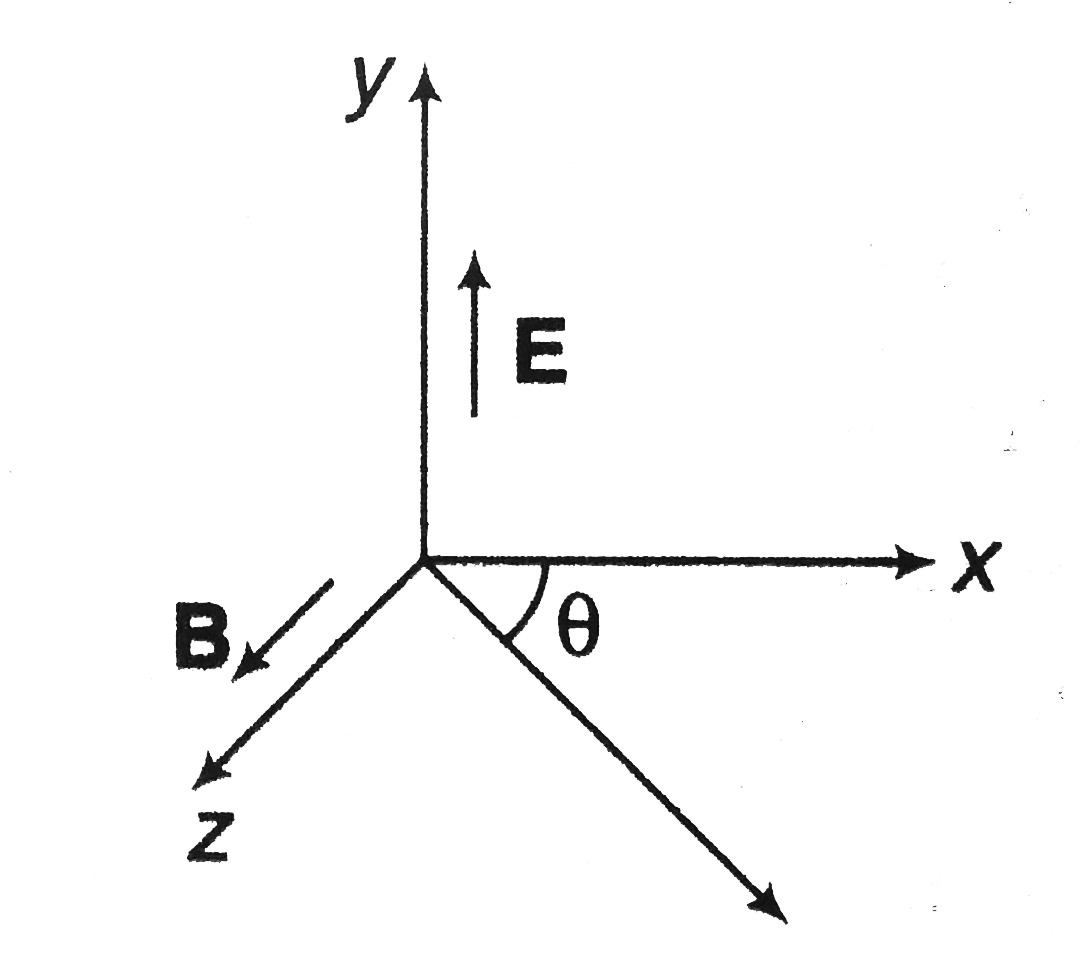A non-relativistic proton beam passes without deviation through a region of space where there are uniform transverse mutually perpendicular electric and magnetic fields with E=120kVm−1andB=50mT. Then the beam strikes a grounded target. Find the force which the beam acts on the target if the beam current is equal to i=0.8mA.
Mass of protons =1.67×10−27kg.
The correct Answer is:A, B
Fe=Fm or eE=eBv
∴V=EB=120×10350×10−3
=2.4×106m/s
Let n be the number of protons striking per second.
Then,
ne=0.8×10−3
or n=0.8×10−31.6×10−19
=5×1015m/s
Force imparted=Rate of change of momentum
=nmv
5×1015×1.67×10−27×2.4×106
=2.0×10−5N
Topper's Solved these Questions
- BOOK - DC PANDEYCHAPTER - MAGNETICSEXERCISE - INTRODUCTORY EXERCISE1videos
MAGNETICS
- BOOK - DC PANDEYCHAPTER - MAGNETICSEXERCISE - SUBJECTIVE_TYPE1videos
MAGNETICS
- BOOK - DC PANDEYCHAPTER - MAGNETICSEXERCISE - MCQ_TYPE1videos
MAGNETICS
- BOOK - DC PANDEYCHAPTER - MAGNETIC FIELD AND FORCESEXERCISE - Medical entrance s gallery59videos
MAGNETIC FIELD AND FORCES
- BOOK - DC PANDEYCHAPTER - MAGNETISM AND MATTEREXERCISE - Medical gallery1videos
MAGNETISM AND MATTER
Similar Questions
A non-relativistic protons beam passes without diviation through the region of space where there are unifrom transverse mutually perpendicular electric and magnetic fields with E=120kV/m and B=50mT. Then the beam strikes a grounded target. Find the force with which the beam acts on the target if the beam current is equal to I=0.80mA.
View SolutionA proton beam passes without deviation through a region of space where there are uniform transverse mutually perpendicular electric and magnetic field with E and B Then the beam strikes a grounded target. Find the force imparted by the beam on the target if the beam current is equal to I .
View Solution
Knowledge Check
- Question 1 - Select One
A beam of well collimated cathode rays travelling with a speed of 5×106ms−1 enter a region of mutually perpendicular electric and magnetic fields and emerge undeviated from this region. If |B|=0.02t, the magnitude of the electric field is
A105Vm−1B2.5×108Vm−1C1.25×1010Vm−1D2×103Vm−1
A beam of non-relativistic charged particles moves without deviation through the region of space A where there are transverse mutually perpendicular electric and magnetic fields with strength E and induction B. When the magnetic field is switched off, the trace of the beam on the screen S shifts by Δx. Knowing the distance a and b, find the specific charge q/m of the particles.
View SolutionA beam of non-relatitivistic chagred particles moves without deviation through the region of space A (fig) where there are transerve mutually perpendicular electric and magnetic fields with streght E and induction B. When the magnetic field is swichted off, the trace of the beam on the screen S shifts by Δπ. Knowing the distances a and b, find the spefic charge q/m of the particles.
 View Solution
View SolutionNon-relativistic protons move rectinearly in the region of space where there are unifrom mutually perpendicular electric and magnetic fields with E=4.0kV/m and B=50mT. The trajectory of the protons lies in the plates xz (Fig) and forms an angle φ=30∘ with the x axis. Find teh pithc of the helical trajectory along which the protons will move after the electric field is swiched off.
View SolutionA proton of mass m=1.67×10−27kg moves uniformly in a space where there are uniform, mutually perpendicular electric and magnetic fields with Ez=5kV/m and Bx=40mT at an angle ϕ=60∘ with the x-axis in the xy-plane. Find the pitch of the trajectory after the electric field is switched off.
View SolutionNon-relativistic protons move reactilinearly in the region of space where there are uniform mutually perpendicular electric and magnetic fields with E and B. The trajectory of the protons lie in the plane X-Y as shown in Fig. 1.107 and forms an angle ϕ with X-axis. Find the pitch of the helical trajectory along which the protons will move after the electric field is switched off.
 View Solution
View SolutionA beam of alpha particle passes underflected with a horizontal velocity v, through a region of electric and magnetic fields, mutually perpendicular to each other and normal to the direction of the beam. If the mangnitude of the electric and magnetic fields are 120kVm−1 and 60mT respectively, calculate (i) velocity of the beam (ii) force with which it strikes a target on a screen, if the alpha particle beam current is equal to 1mA? Mass of proton=mass of neutron =1⋅675×10−27kg.
View SolutionProtons move rectilinearly in the region of space where there are uniform mutually perpendicular electric and magnetic fields E and B. The trajectory of protons lies in the plane xz as shown in the figure and forms an angle 9 with x-axis. Find the pitch of the helical trajectory along which the protons will move after the electric field is switched off.
 View Solution
View Solution

